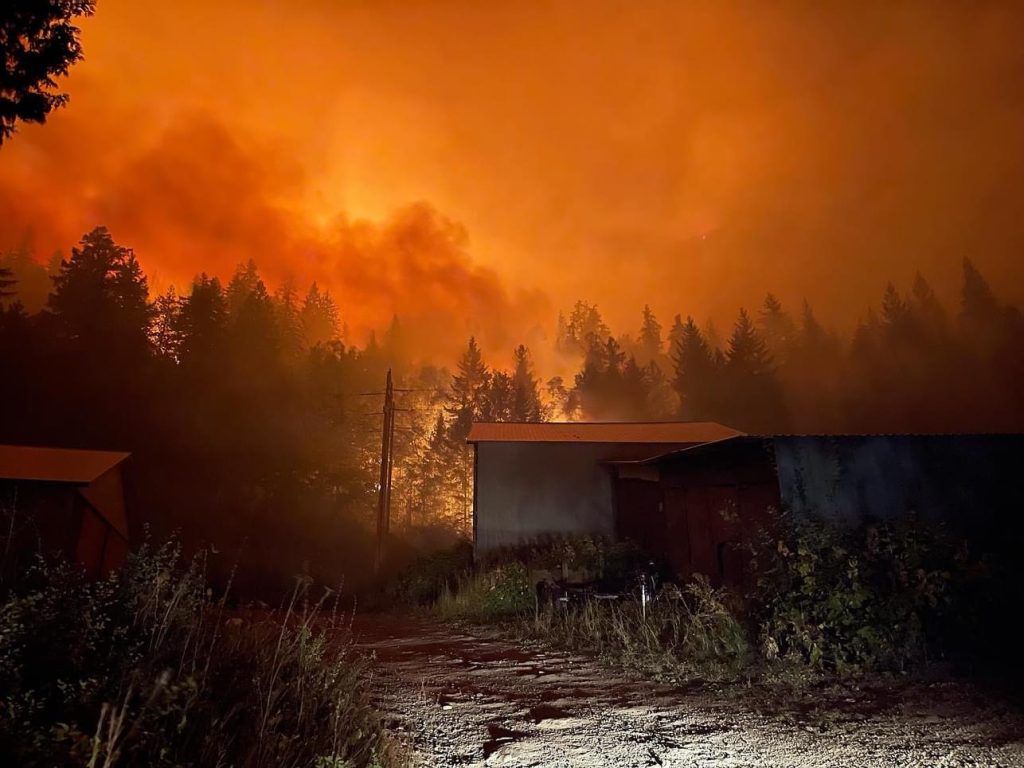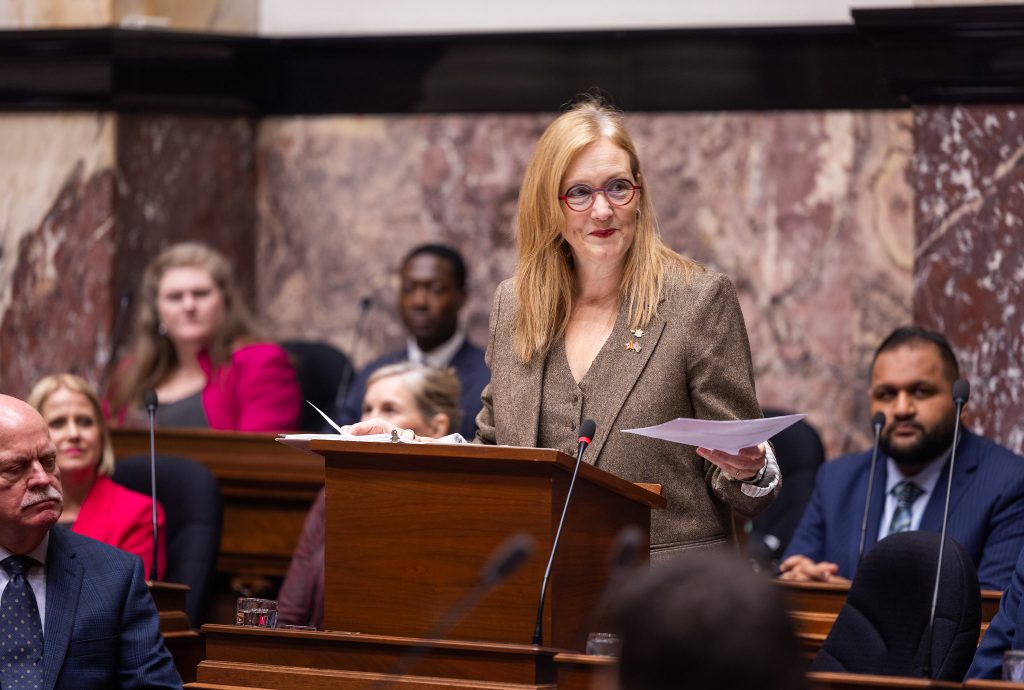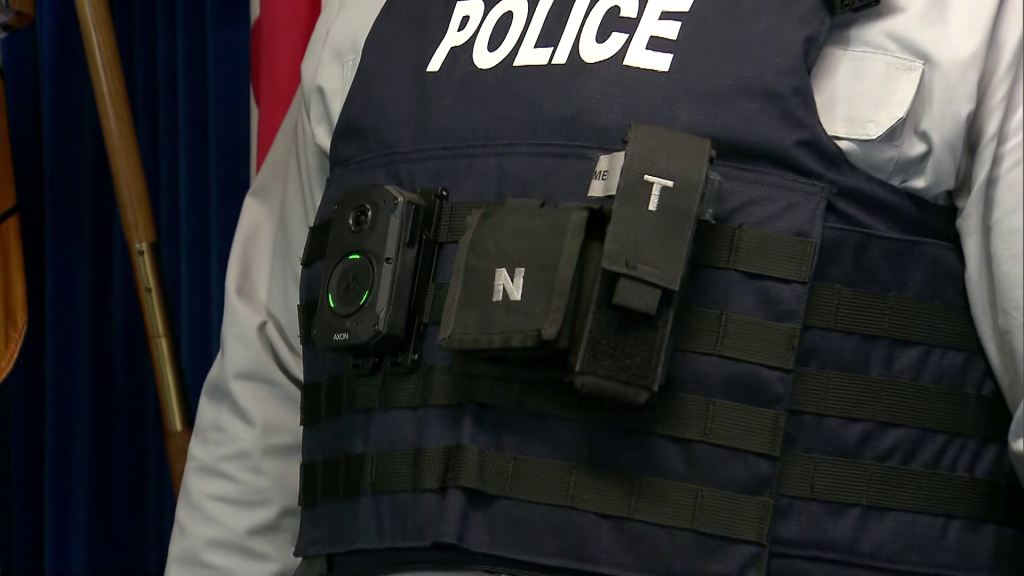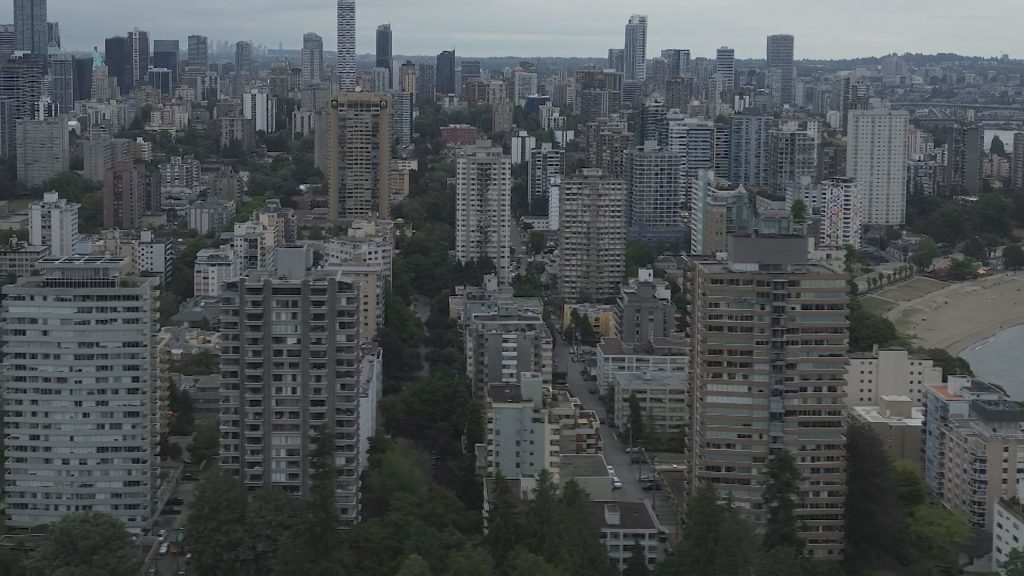Should B.C. prepare people to ‘stay and defend’ if they defy wildfire evacuation orders?

Posted August 26, 2023 2:52 pm.
Last Updated August 26, 2023 3:52 pm.
As B.C. and much of Canada deal with a devastating and unprecedented wildfire season, complaints, questions, and solutions abound on how to best protect life and property, and mitigate the extent of future wildfires as human-caused climate change escalates natural disasters.
Most recently, in the province’s Shuswap region, tensions between officials and some locals have risen. Some residents have expressed feeling abandoned and believing their offers of support have not been heard by officials. Some have chosen to stay home and not leave the area when directed by emergency services.
Sarah Dickson-Hoyle, a post-doctoral research fellow at the UBC Faculty of Forestry, explains that every year, there are thousands of people placed under evacuation orders, and “every year, without fail, some people choose to stay behind.”
While there’s a range of reasons people choose to defy evacuation orders, her research with Secwépemc First Nations from the 2017 wildfires showed there was a belief they were being “left on their own and if they chose to leave, they may not have any community to come back to.”
“And not only that, there wouldn’t be support in recovery,” Dickson-Hoyle explained. “And we’re seeing the protracted processes of rebuilding and recovery after the Lytton fire, for example.”
Related Articles:
-
Multiple evacuation orders rescinded or downgraded in B.C.’s southern Interior
-
Highway 1 between Chase and Sorrento reopens
-
Over 130 structures lost in Shuswap wildfire
She adds many people in rural areas have a “culture of self-reliance,” and when provincial resources are stretched across the province, and they feel or see other wildfires being prioritized, “they’re not willing to leave and let their property burn.”
“There’s also concerns that if they evacuate, they won’t be able to get back in. Regardless of permit systems, they won’t be able to support livestock, maybe they have pets that they can’t evacuate.”
Under current provincial laws, the Emergency Program Act covers evacuations, however, local authorities and First Nations work with community members to encourage compliance and cooperation.
But how prepared are folks in B.C. to actually defend their properties, communities, and neighbours against wildfires?
Dickson-Hoyle explains that wildfire preparation and education across communities is extremely varied. Since the devastating Kelowna fire in 2003, Dickson-Hoyle says there has been investment into community preparation, but “uptake and implementation has been slow.”
“It’s not for lack of awareness of risk, but it’s in large part, particularly for small or rural communities, the capacity to actually apply for and administer and then implement risk reduction, can be really limited. So, many communities are left underprepared.
“That means that maybe there’s not the capacity or expertise to conduct fuel treatments around the communities, or perhaps it means they don’t have a FireSmart Coordinator or someone who can be tasked with actually coordinating people,” she explained.
“There are some really bright spots and great lessons to be learned from around the province and communities, [but] many communities are not prepared for the scope and scale of wildfires that we’re seeing.”
Dickson-Hoyle has tracked the provincial government’s response to reports coming from the Okanagan’s 2003 fire and a 2018 report.
The 2018 report made recommendations the provincial government work more closely with local First Nations Knowledge Keepers in wildfire and other disaster management, “and to support local communities in contributing to fire response within their community.”
While Dickson-Hoyle says the BC Wildfire Service is exploring pathways for collaboration and cooperative wildfire response, especially focusing on working with the First Nations Emergency Services Society, and has been seen working with some local residents and bringing them into operations, “it’s about recognizing and supporting what knowledge exists in communities.”
She notes reports out of Australia — stemming from deadly fires in 2009 and 2020 in the state of Victoria — have found “communities are more likely to take ownership and initiative of being prepared if their knowledge and experience is actually valued by fire agencies. So, that’s really where we need to go.”
When it comes to looking at different jurisdictions that also experience wildfires, Dickson-Hoyle says Australia’s wildfire fighting efforts have a much greater reliance on volunteer firefighters who are also part of the community, “so there’s recognized, trained capacity in rural communities.”
She explains volunteer firefighters in Australia are trained as wildland firefighters, not just municipal structural firefighters.
“That capacity exists in many ways here in B.C., but it’s just not as integrated into the formal wildfire response systems. So, there would need to be greater investment in all of those aspects — education, training of local communities, recognition of local capacity.”
Australia’s ‘Stay or Go’ policy is also worth considering, Dickson-Hoyle says, but there would need to be some serious investment in education and infrastructure. The long-standing policy is a colloquial name for the practice of: “Stay if you are able-bodied and your property is well prepared, and you have the necessary training and equipment to defend yourself and your house; if not go, and if you go, then go early.”
But Dickson-Hoyle says it wouldn’t be a simple implementation here in B.C. “There’s been extensive community outreach and awareness building and education programs as to what that [policy] means and why the best option is still leaving early, but what is required if you are to stay and defend your home.
“There’s been investment in community fire refuges and neighbourhood safer places, so that if people choose to stay, that is somewhere safe in their community, that they can take shelter in.”
Updating building codes to ensure houses built in wildfire-prone areas can withstand blazes are also a key to Australia’s wildfire preparedness and policies, Dickson-Hoyle says. She notes it was also a key recommendation from the 2003 Filmon report, where municipal and regional governments implement building codes and planning systems, but explains it hasn’t been taken up province-wide.
Related Articles:
-
Metro Vancouver, Fraser Valley still under wildfire smoke air quality advisory
-
More wildfire evacuation orders in Kelowna area to lift; favourable weather conditions continue
-
Wildfire forces crews to retreat, threatens key hub point of Hay River, N.W.T.
“Some municipalities do have that incorporated, for example, in their development application processes for new developments, but it’s not in place in all cases.
“Whereas in Australia, in the southeast, for example, if you’re living in a bushfire area, a wildfire-prone area, and you want to build a second dwelling or all the way up to a new housing development, there are assessments of bushfire risk that are conducted as part of that. On private land, [it includes] everything from what is the access like? What’s the proximity to wildfire-prone vegetation? What are the building materials that you’re proposing? And how can we reduce the risk through a combination of those strategies?”
As for how to move forward, Dickson-Hoyle says there’s a real recognition that responding to escalating wildfires in B.C. needs to be done collectively and in cooperation with communities.
She notes trust is a key element.
“We’re six years out from 2017 … but for communities who were impacted, it feels like just yesterday. And so when communities or individuals have these really traumatic experiences and perhaps don’t have the best experiences, feeling like they weren’t engaged, that lack of trust can take a really long time to rebuild.
“There are still these legacies of mistrust that exist from six years ago, or 20 years ago, from when people first experienced those wildfires. And so we really need to recognize that and try and work out how we can start to rebuild that trust, rather than just placing blame on either end.
“It is a critical issue that we have that people are staying behind, so how do we move through blame towards greater collaboration in the future?”
‘You must leave … this is the law’: Minister says of defying evacuations
In a statement to CityNews, Bowinn Ma, the minister of emergency management and climate readiness, says she recognizes the challenges that come when being placed under an evacuation order and being told to leave everything behind.
“For that reason, evacuation orders are not issued lightly. If you are placed under an evacuation order, you must leave the area immediately. This is not a recommendation. This is the law. People who choose to ignore an evacuation order put themselves, their families and wildfire personnel in harm’s way, as well as hinder firefighting efforts,” she said.
Ma notes it’s understandable that people want to help with firefighting efforts, but it must be coordinated under the “unified command” of the BC Wildfire Service.
“A centralized approach is crucial to fighting fires. BC Wildfire Services is willing and able to work with skilled, trained, and experienced individuals who want to coordinate efforts, as was done with the Knutsford community who have been engaged in firefighting efforts since July. Work is underway in the Shuswap community to increase coordinated efforts on the ground, and we thank local leaders who are actively working together to make that happen.”
But Dickson-Hoyle says the province and officials should be working to understand the motivations of those who want to stay and support them to make sure they’re prepared.
“Not only by mitigating risk in advance, but actually preparing them to stay and defend their properties and protect themselves and their properties if they do choose to stay,” she said.
CityNews reached out to the BC Wildfire Service for comment, but due to current operational demand, the service says it was unavailable.
–With files from Kier Junos








